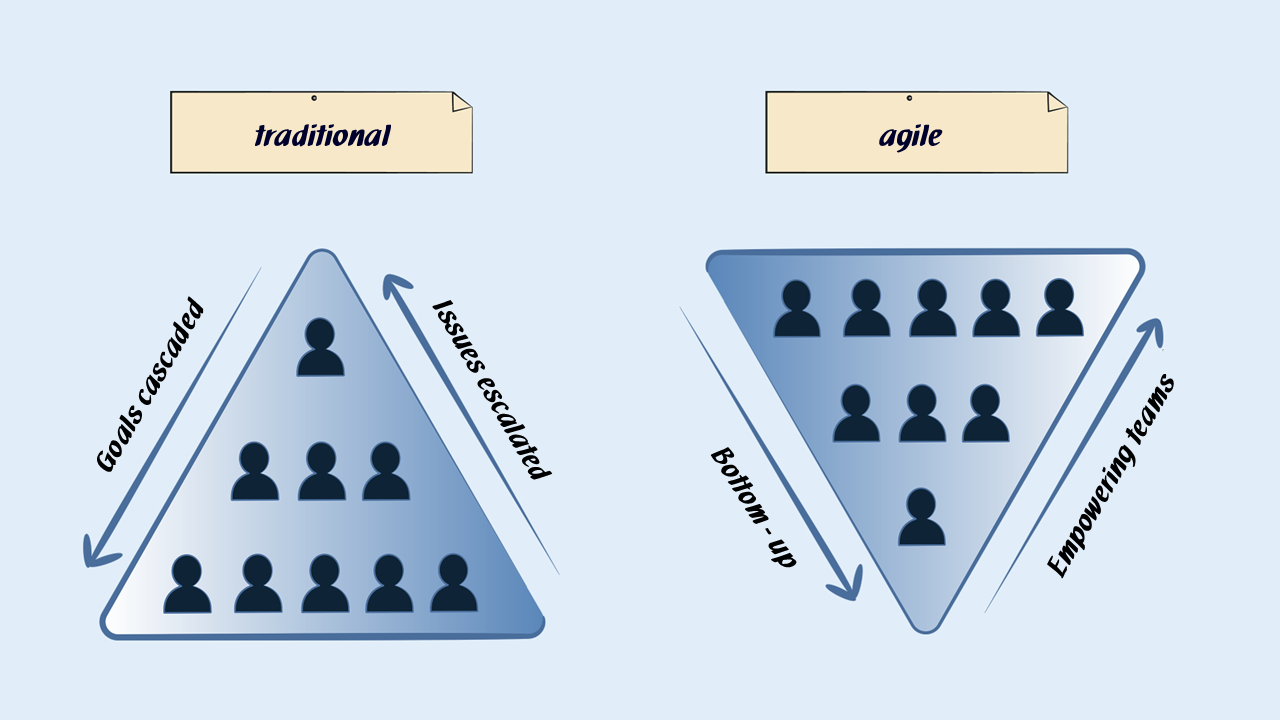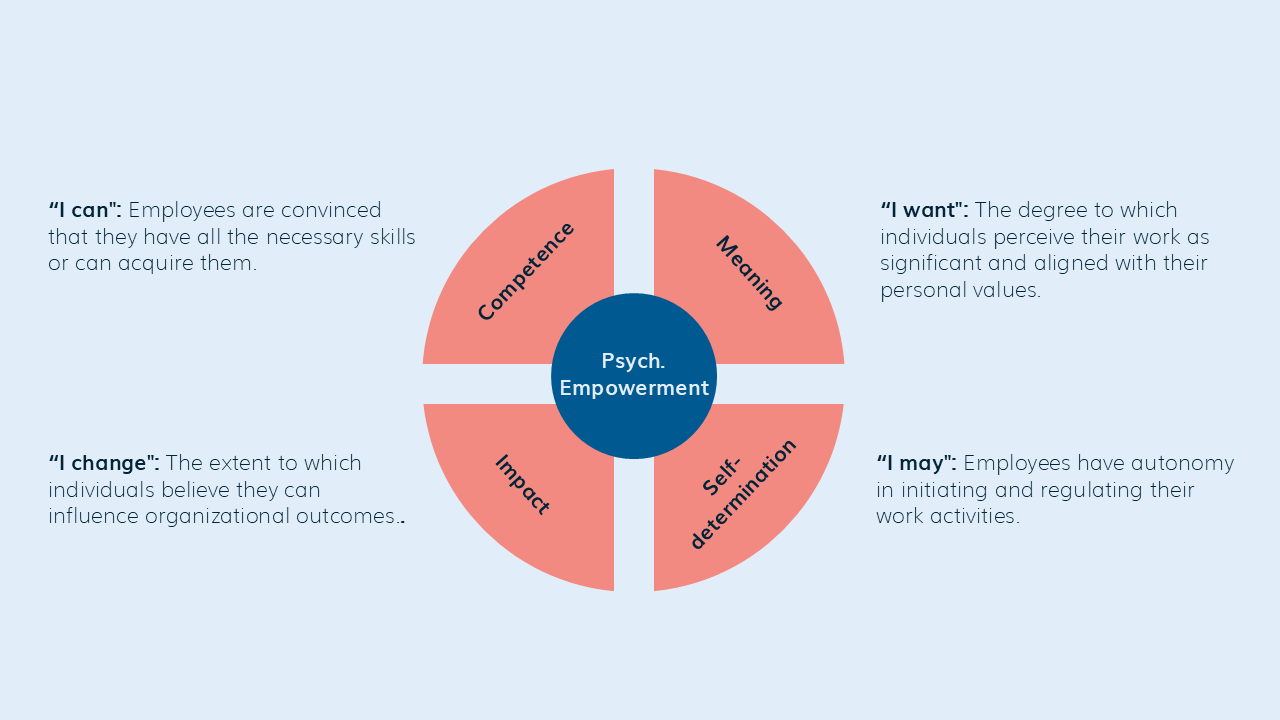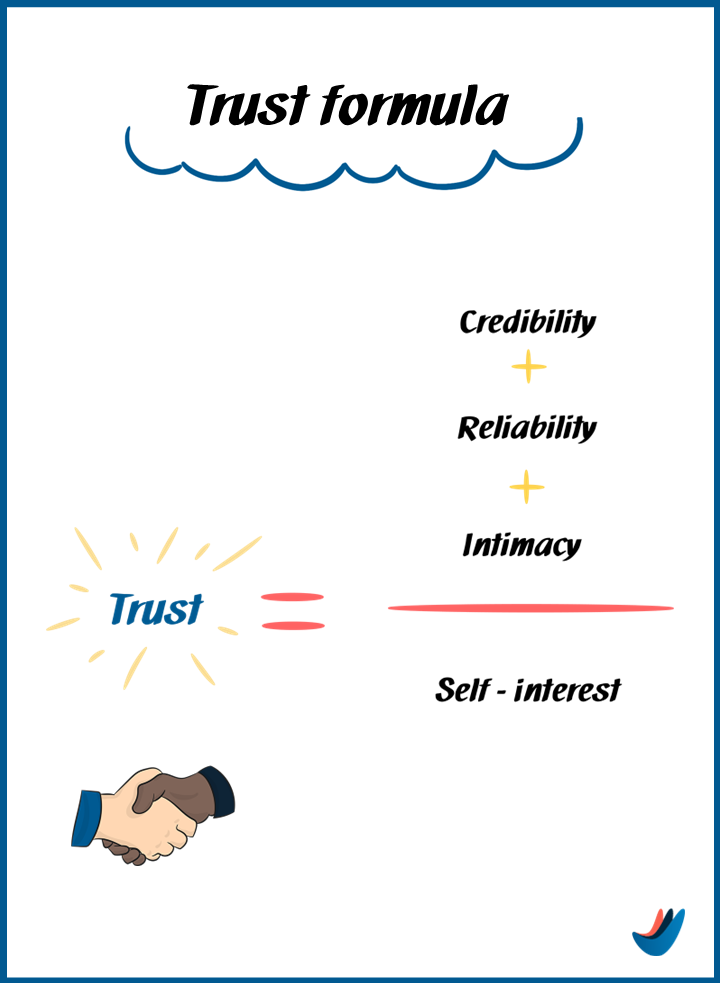What is Agile Leadership?
Agile working means the ability to respond quickly, flexibly, and innovatively to changes and uncertainties. Agile leadership supports this through a corresponding mindset and specific behaviors. It is based on principles such as a humanistic view of people, the concept of servant leadership, communication at eye-level, and empowering coaching of employees. At troodi, we define agile leadership through four core principles which are presented in this blog article.
How does Agile leadership differ from traditional leadership? The following table highlights the differences between these two leadership approaches. Note: These are not fixed categories but rather dimensional characteristics.
Comparison of Traditional and Agile Leadership:
- Focus of Leadership Action: Efficiency & ROI vs. empowerment & collaboration
- Decision-making: Centralized vs. decentralized
- Role of the Leader: Command & control vs. facilitation & coaching
- Communication: Structured & formal vs. holistic & regular
- Motivation: Intrinsic & extrinsic motivation vs. intrinsic motivation & personal responsibility
- Flexibility: Stability through defined processes vs. high adaptability and encouragement of creative problem-solving and innovation
Agile Leadership Means Leading in Seld-Organization
Self-organized teams are a key component of an agile organization. When teams organize themselves, it can lead to higher productivity as decisions are made faster and better. It can also increase innovation as more experiments are initiated and ideas are tested more quickly.

Through self-organization in teams, the demands on leadership change fundamentally, as the traditional leadership pyramid is essentially turned upside down. In a traditional organization, strategy and major decisions are made at the top and then cascaded down to the teams. When problems arise, they are often escalated up the hierarchy rather than being solved on the ground. Decisions are made at the top and communicated down again. The leader’s role in this structure is primarily to ensure that team members achieve their goals and that errors are identified and corrected. The issue with this approach: decisions are made very slowly, and employee motivation can suffer due to lack of autonomy.
In an agile organization, this leadership pyramid is flipped. Decisions are made as directly as possible within the teams and then communicated upwards. Instead of passing information and goals from top to bottom, leaders act as mentors and supporters (“servant leadership”). Their primary task is to remove obstacles and support employees so they can perform optimally at their level.

Agile Leadership Principle 1: Supporting Self-Organization
An agile leader supports their team in self-organization. They delegate responsibility and decision-making to the team and ensure the team has the necessary information and resources to make sound decisions independently. It is essential to clarify goals and responsibilities within the team while providing the space to determine the best path to achieving those goals. Self-organization does not mean abolishing leadership; rather, it redistributes leadership across multiple shoulders. Often, organizations experience a leadership vacuum when leaders choose to transfer responsibility to the team (“The team has to decide this now”), but the team is unsure whether it is allowed to take on this responsibility. Therefore, it is crucial for agile leaders to establish clear frameworks and ensure transparency regarding goals and responsibilities.
Especially when a team is still experimenting with agile working methods, the leader is responsible for introducing structures and processes that support self-organization. Agile tools, such as delegation boards or frameworks for group decision-making (e.g., role-based decisions or the consent principle), can be very helpful here.
Agile Leadership Principle 2: Empowering Individuals
For self-organization to succeed, team members must be capable of structuring themselves. A key task of leaders is to empower their team members, meaning they support them in reaching their full potential and delivering their best performance. Psychological studies (link to Schermuly study) show that structural empowerment measures (agile team structures, participation, distributed decision-making, etc.) only achieve their desired effects (higher performance, more innovation, etc.) if individuals are psychologically empowered. Psychological empowerment consists of four central components: meaningfulness, competence, self-determination and impact.

To foster their employees’ intrinsic motivation, agile leaders should regularly communicate the organization’s vision and ensure that employees’ tasks align with their personal values. Leaders can enhance their employees’ sense of competence by providing regular feedback on strengths and areas for development and using coaching techniques to activate their employees’ resources. High levels of self-determination can be achieved by aligning on goals while allowing maximum freedom in how to achieve them. Leaders can increase employees’ sense of impact by highlighting how their work contributes to the organization’s overall success and recognizing good performance.
Agile Leadership Principle 3: Promoting Team Development
A soccer coach’s job is not only to improve the individual players on their team. Above all, it is essential to ensure that they play well together as a team. The same applies to an agile leader: their task is to ensure effective collaboration among the individuals in their team. And—taking it a step further—to ensure optimal collaboration between their team and other teams.

An agile leader acts as the primary team developer. What does this mean in practical terms for the leadership role? An agile leader proactively identifies the strengths and areas for improvement within their team and works together with the team to develop initiatives to optimize collaboration. They can utilize agile methods such as team retrospectives. Additionally, they create an environment of psychological safety, ensuring that everyone on the team feels comfortable sharing their thoughts and ideas. Moreover, they foster a culture of innovation by encouraging experiments and establishing a positive error culture, where setbacks are seen as opportunities to learn. In this context, the leader takes on an essential role model function.
Agile Leadership Principle 4: Being a Role Model
An agile leader sets an example of the attitude and behavior that they want to promote in their team. The behaviour of an organization’s managers has a major influence on how employees behave. It is important to walk the talk – others quickly notice whether a person actually delivers what they promise. Central components of a role model function include respectful communication on an equal footing, the willingness to openly share one’s own mistakes and errors and to subordinate one’s own interests to those of the team and the organization. A very important factor in the role model function is one’s own trustworthiness. With the help of the trust formula, managers can reflect on how they can increase their own trustworthiness.

Summary: The Path to Becoming an Agile Leader
An agile leader ensures through their mindset and behavior that agile working is truly practiced. Agile leadership can be described through four principles:
1. Promoting team self-organization by combining goal and role clarity with autonomy in goal achievement.
2. Psychological empowerment, enabling team members to experience meaning, competence, self-determination, and impact in their work.
3. Ensuring effective team collaboration through team development measures and fostering a sense of psychological safety.
4. Deliberately using their role model function.
It is important to note that changing one’s leadership behavior does not happen overnight but is a long process. Targeted people development measures, such as tailored training programs or leadership coaching, can support leaders in this transformation process.
Are you interested in learning more about agile leadership? Then our learning program “Agile Leadership” might be of interest to you. Feel free to contact our L&D Consulting Team if you want to learn more about transitioning to an agile leadership culture.




